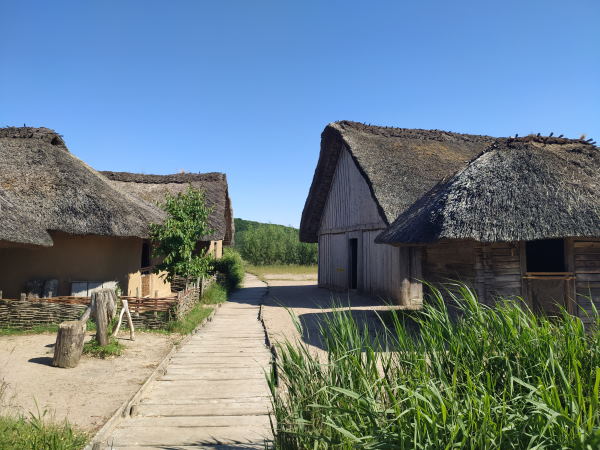
Hedeby and the Danevirke
Hedeby and the Danevirke are outstanding testimonies of the Viking Age (8th-11th century AD). The trading post of Hedeby and the ramparts of the Danevirke secured the borderland between Scandinavia and mainland Europe at the narrowest point between the Baltic Sea and the North Sea, the land neck of Schleswig. This special location enabled intensive trade and exchange between the regions.
Central Trade and Transport Hub in Northern Europe
Hedeby was connected to the Danevirke, which served as a border fortification and was extended again and again by Danish kings over centuries. Hedeby flourished in this border region and developed into the central trade and transport hub in northern Europe. Hedeby is now a prime example of an early urban trading centre. The exceptionally well-preserved archaeological material serves science as a source for many important findings from the Viking Age.
Climate Change at World Heritage
As archaeological World Heritage Site, Hedeby and the Danevirke are vulnerable regarding changes of the ground and the environmental conditions. Heavy rainfalls as well as droughts have negative impacts on the monuments and the landscape, may it be in form of soil erosion along the ramparts or the destruction of the countless archaeological objects which are still conserved in the ground or the water. Also, the nature preservation areas along the site are affected by climate change.
At the same time, the undisturbed view of the monuments plays an important role when it comes to visitor experiences. Therefore, there is an additional area of 2-5 kilometers around the monument where no turbines or high buildings are allowed to be built. The development of renewable energies, such as the construction of wind turbines, interferes with the perception of the site and hence creates conflicts between monument and nature preservation, tourism and economic aspects. The question arises: do archaeological World Heritage Sites and sustainable energy development automatically exclude each other? Or can we find compromises or alternatives? How can Hedeby and the Danevirke contribute to a sustainable and climate friendly region?
Find more information on whc.unesco.org/en/list/1553.

